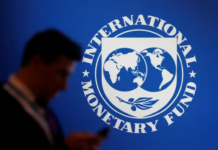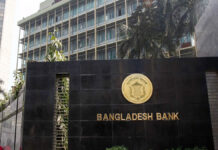Remittance slows in January

Remittance inflow, the only fuel that has kept the foreign exchange market balanced amid declining exports, slowed in January after a record growth in December last year.
The country received $1.63 billion remittance in January this year, down by 2.88 percent from the previous month.
However, remittance growth stood at 2.58 percent higher than the same period last year, according to Bangladesh Bank data.
In December, remittance grew by 39.71 percent year-on-year to $1.68 billion, central bank data shows.
Remittance inflow kept its strong growth since the government announced 2 percent cash subsidy in the budget for the current fiscal year, allocating Tk3,060 crore to meet the expenses of this incentive.
Fueled by the cash incentive, remittance inflow reached a new height of $18.35 billion, a record for last year.
Among all economic indicators, only remittance remained upward for several months, giving the Bangladesh Bank breathing room in managing the current account balance.
In the first five months of the current fiscal year, export fell by 7.51 percent and import declined by 5.26 percent, according to central bank data.
Despite a fall in manpower export, rise in US dollar price and the declared cash incentive kept remittance growth strong, said a senior executive of the Bangladesh Bank.
However, the slight fall of remittance growth in January is not unusual because the growth was much higher in the previous month, he said.
The price of US dollar rose to Tk84.90 in January this year from Tk83.95 in the same month of 2019, central bank data shows.
Backed by strong remittance inflow, the current account balance deficit narrowed to $1 billion in July-November of the 2019-20 fiscal year from $1.42 billion in the same period of the last fiscal year.
The Bangladesh Bank, in its latest revised monetary statement for the second half of the current fiscal year, expressed hope for continuation of upward remittance inflow in the future backed by the cash incentive.
Although export-import growth remains down, strong inflow of remittance on the back of the government’s 2 percent cash incentive for remitters will keep the overall trade balance at a surplus of $410 million at the end of this fiscal year, according to the Monetary Policy Statement for this fiscal year.
In the first five months of the 2019-20 fiscal year, the overall trade balance remained negative at $307 million, according to central bank data.









